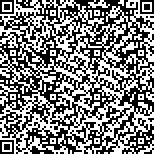| 本文已被:浏览 718次 下载 1410次 |

码上扫一扫! |
|
|
| 腹部推拿调控Tryptase-PAR2-PKCε通路防治IBS-D内脏痛的机制研究 |
|
李华南1,2, 王毓岩1, 张小凡1, 张玮1,2, 马菲3, 董桦1,2, 王金贵1
|
|
1.天津中医药大学第一附属医院, 国家中医针灸临床医学研究中心, 天津 300381;2.国家中医药管理局推拿手法生物效应三级实验室, 天津 300381;3.天津市中医药研究院附属医院, 天津 300120
|
|
| 摘要: |
| [目的] 验证腹部推拿防治腹泻型肠易激综合征(IBS-D)模型大鼠内脏高敏感的效果,阐明其作用途径与机制。[方法] 40只SD雄性大鼠,随机分为空白组、模型组、腹部推拿组、西药组,每组10只。采用母婴分离结合慢性应激法制备IBS-D大鼠模型。应用腹壁撤退评分评价干预效果。采用甲苯胺蓝染色观察结肠组织肥大细胞(MC)聚集数量及状态。利用免疫组化及蛋白质印迹法(Western blot)法分别检测胰蛋白酶(Tryptase)颗粒分布、结肠组织中蛋白酶激活受体2(PAR2)和蛋白激酶Cε(PKCε)蛋白表达。[结果] 与模型组比较,腹部推拿组和西药组腹壁撤退反射评分(AWR)明显降低(P<0.05)。镜下显示,模型组MC形态不规则,计数及密度显著高于空白组;腹部推拿组、西药组与模型组相比,MC计数降低、密度减少(P<0.01)。免疫组化检测发现与模型组相比,腹部推拿组、西药组MC Tryptase颗粒分布明显降低(P<0.01);Western blot检测发现与模型组相比,腹部推拿组和西药组的PAR2、PKCε表达量均显著降低(P<0.01)。[结论] 腹部推拿作用于腹部,可能通过活化肠道MC,调控其脱颗粒,降低Tryptase释放,并借助Tryptase-PAR2-PKCε通路,进而改善IBS-D模型大鼠肠道高敏感性作用机制。 |
| 关键词: 腹部推拿 腹泻型肠易激综合征 内脏高敏感 Tryptase PAR2 PKCε |
| DOI:10.11656/j.issn.1672-1519.2023.01.15 |
| 分类号:R244.1 |
| 基金项目:国家自然科学基金项目(81873394);国家中医药管理局中医药传承与创新“百千万”人才工程(岐黄工程)岐黄学者(国中医药人教函[2021]203号);国家区域中医(推拿)诊疗中心项目;天津市131优秀人才培养项目。 |
|
| Mechanism of abdominal massage regulating Tryptase-PAR2-PKCε pathway to prevent and treat visceral pain in IBS-D |
|
LI Huanan1,2, WANG Yuyan1, ZHANG Xiaofan1, ZHANG Wei1,2, MA Fei3, DONG Hua1,2, WANG Jingui1
|
|
1.National Clinical Research Center for Chinese Medicine Acupuncture and Moxibustion, First Teaching Hospital of Tianjin University of Traditional Chinese Medicine, Tianjin 300381, China;2.Level3 Laboratory of Biological Effects of Tuina Manipulation, State Administration of Traditional Chinese Medicine, Tianjin 300193, China;3.Tianjin Academy of Traditional Chinese Medicine Affiliated Hospital, Tianjin 300120, China
|
| Abstract: |
| [Objective] To verify the effect of abdominal massage on the prevention and treatment of visceral hypersensitivity in rats with diarrhea-predominant diarrhea (IBS-D),and to clarify its action pathway and mechanism.[Methods] Forty SD male rats were randomly divided into blank group,model group,abdominal massage group and Western medicine group,10 rats in each group. The IBS-D rat model was established by the mother-infant separation method + chronic stress method. The abdominal wall withdrawal score was used to evaluate the intervention effect. Toluidine blue staining was used to observe the number and status of mast cells in colon tissue. The distribution of Tryptase particles and the expression of PAR2 and PKCε protein in colon tissue were detected by immunohistochemistry and western-blot,respectively.[Results] Compared with the model group,the AWR scores of the abdominal massage group and the western medicine group were significantly lower (P<0.05). Microscopically,the shape of MC in the model group was irregular,and the count and density were significantly higher than those in the blank group;compared with the model group,the count and density of mast cells decreased in the abdominal massage group and western medicine group (P<0.01). Immunohistochemistry:compared with the model group,the distribution of Tryptase granules in mast cells in the abdominal massage group and the Western medicine group was significantly decreased (P<0.01). Western-blot:compared with the model group,the abdominal massage group and the Western medicine group had significantly lower distribution of Tryptase particles (P<0.01). The expressions of PAR2 and PKCε were significantly decreased (P<0.01).[Conclusion] Abdominal massage acts on the abdomen,possibly by activating intestinal MC,regulating its degranulation,reducing the release of Tryptase,and through the Tryptase-PAR2-PKCε pathway,thereby improving the mechanism of intestinal hypersensitivity in IBS-D model rats. |
| Key words: abdominal massage diarrhea-predominant irritable bowel syndrome visceral hypersensitivity Tryptase PAR2 PKCε |
